|


256-bit encryption
$500,000 protection

|
ST. ROCH boat model
St. Roch
is a Royal Canadian Mounted Police schooner launched on
May 7, 1928. She was the first ship to completely
circumnavigate North America. Although St. Roch was the
second vessel to transit the Northwest Passage, she was
the first to complete it in the west to east direction
(Pacific to the Atlantic Ocean.) Although many ships had
attempted the Northwest Passage over the centuries, only
one ship had completed such a voyage previously. The
Gjøa,
commanded by Amundsen, had traversed east to west 38
years earlier.
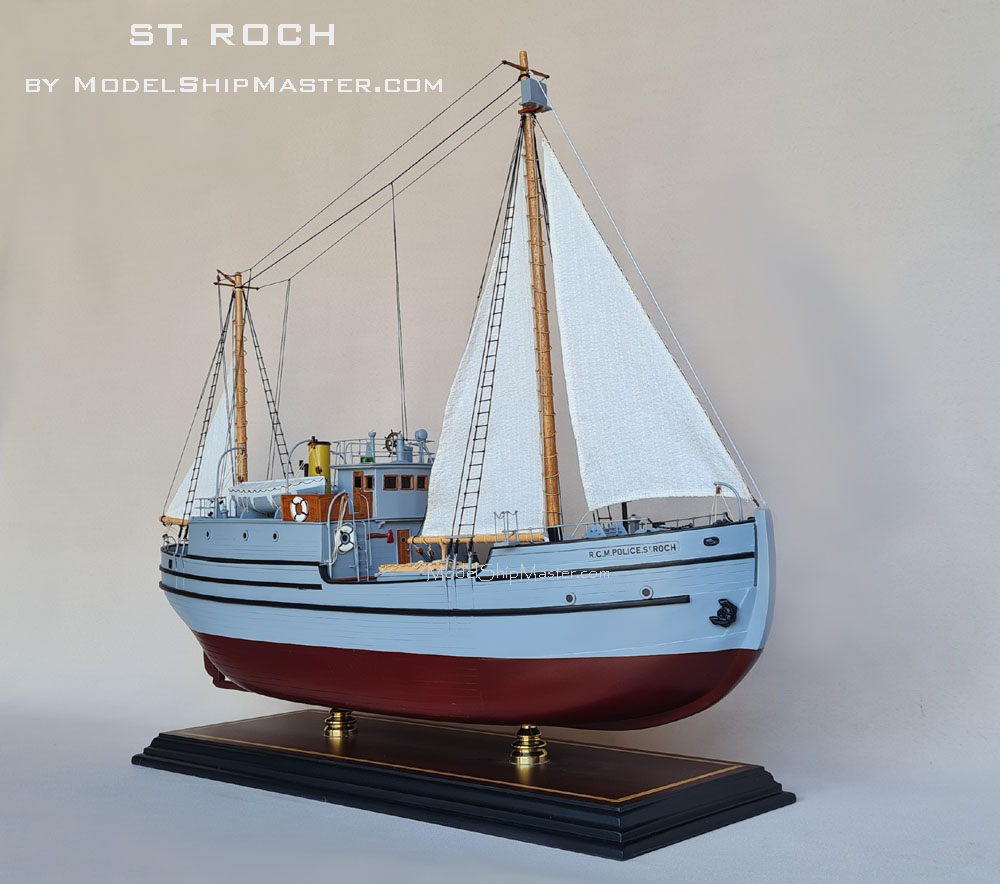
St. Roch
was primarily intended as a support ship for remote
police outposts in the Arctic. 104 feet in length, her
hull was built with Douglas fir with Australian gumwood
(very hardest wood) outer hull. Steel plate covered the
bow. Her rounded hull allowed ice to slide underneath.
St. Roch was rigged as an auxiliary schooner, using
sails to supplement her engine when the wind was right.
Her engine was a 150 hp Union diesel, 6 cylinder.
Like the famous US cutter Bear, St. Roch served as
an all-purpose roving outpost in the Arctic - supply
ship, post office, hospital, police station, court, and
more.
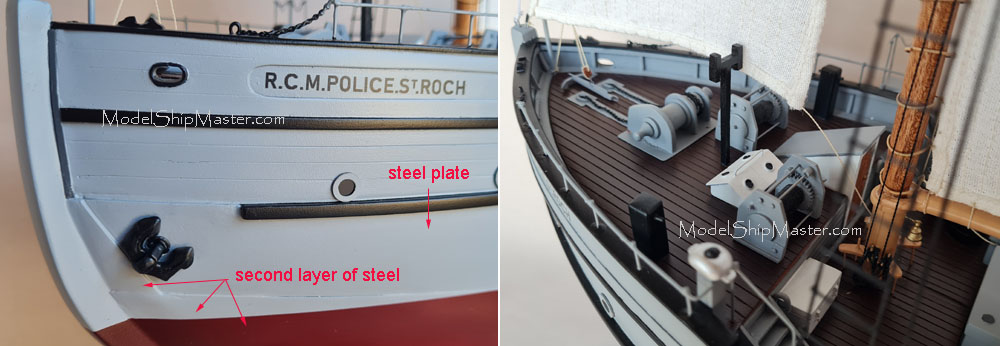
After 12
years of routine service in the Arctic, St. Roch began
her first and most important exploit - a west-to-east
voyage through the Northwest Passage. This voyage was
announced as a demonstration of Canada's sovereignty
along that route - but the real motivation for the
voyage was a deep secret, only revealed in recent years.
The decision to send St. Roch through the Northwest
Passage can be traced to the events of World War II in
Europe, and the urgent need to protect war industries
from enemy action. A critical industrial resource was
located in the Danish colony of Greenland - a cryolite
mine. Cryolite is
a key ingredient in the production of aluminum, and the
Greenland mine was the sole source available to the
Allies. With the fall of Denmark to Germany, the
Greenland colony and mine were left essentially
unprotected, and there was great fear that Germany might
capture or destroy the vital mine. Such an act would
have completely crippled the Allied war industry, and
could have altered the course of the war.
To guard
against German attacks on the cryolite mine, Canada and
Britain began making plans to defend the mines, and even
to occupy Greenland. St. Roch was quickly recognized
as being vital to such plans, thanks to her ability
to operate in heavy ice - she was the only vessel of her
type owned by the Canadian government.
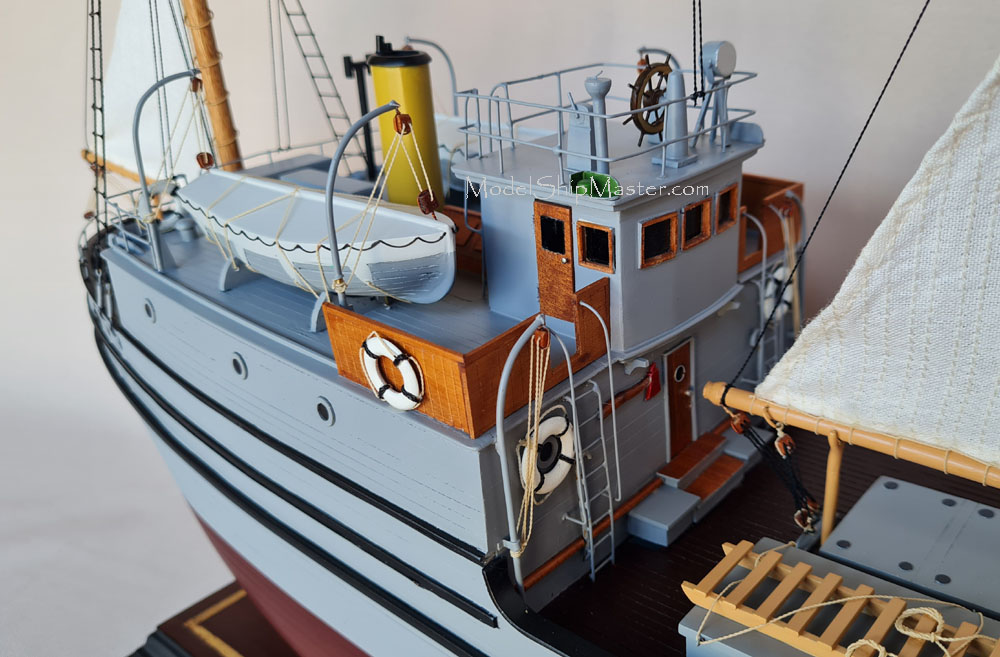
Thus was
born now-famous voyage of St. Roch - but the true
reasons were kept as a closely-held secret. Not only was
it essential to keep the secret from the Germans, but
from the United States as well, to prevent a diplomatic
incident. Of those aboard St. Roch, apparently only her
captain, Sgt. Henry Larsen, knew the true purpose of the
voyage. He carried this knowledge to his grave, and the
facts of the situation have only recently become known,
thanks to the release of long-classified documents.
St. Roch
got underway from Vancouver on June 23, 1940. This
amazing vessel traveled through treacherous and
uncharted waters to cross the Northwest Passage and the
High Arctic, with only a small crew of steadfast men who
had just their skill, talent and no small amount of luck
to rely on. She was frozen in the ice in September, and
didn't move again until July next year. She struggled on through the ice,
finally reaching Halifax on October 11, 1942 - over two
years after sailing from Vancouver. St. Roch became the
second ship to traverse the Northwest Passage, and the
first to make the trip from west to east.

With the
exception of the captain, Henry Larsen, St. Roch was
crewed by policemen who learned to be sailors. Henry
Larsen, born in Norway in 1899, set about building a
career path to realize his dream – to sail the Northwest
Passage. At the age of 15 he went to sea aboard a
square-rigger and later served his compulsory two years
with the Norwegian navy. After spending two years in the
Arctic aboard an American trading schooner, Larsen made
a life altering decision. In 1924 he applied and
received Canadian citizenship and joined the RCMP
becoming first mate on the newly christened St. Roch. A
short time after Larsen was made master of St. Roch. He
skippered St. Roch for 20 years. Eleven other RCMP
traveled on board in 1944, fulfilling duties of both
policemen and sailors. Joe Panipakoocho, an Inuit guide,
and his family traveled with them for part of the 1944
voyage.
Incredibly, the crew managed to make the crossing not
just once, but twice. St. Roch's
next adventure came in 1944 - a return trip through the
Northwest Passage. This time she followed a more
northerly route, and completed the 7,295 mile voyage in
a remarkable 86 days. Arriving at Vancouver on October
16, 1944, she became the first and only ship to traverse
the Northwest Passage in both directions. This record
still stands.
In 1950
St. Roch sailed to Halifax, Nova Scotia via the Panama
Canal. This voyage brought her back to the start of her
1944 Northwest Passage trip, making her the first
ship to circumnavigate North America. In 1954 St.
Roch reversed the journey, returning to Vancouver and
completing a second circumnavigation, in the opposite
direction. St. Roch was the first ship to
circumnavigate the continent in both directions.
In all,
she survived 12 winters stuck in the ice for 10 months
at a time.
On her
final return to Vancouver St. Roch was acquired by the
City of Vancouver as a museum ship. She was brought
ashore for preservation in 1958, and restored to her
1928 appearance. In 1966 Parks Canada constructed a
permanent indoor home for St. Roch, and in 1971
completed a restoration to her 1944 appearance. Today
St. Roch is the centerpiece of the Vancouver Maritime
Museum.
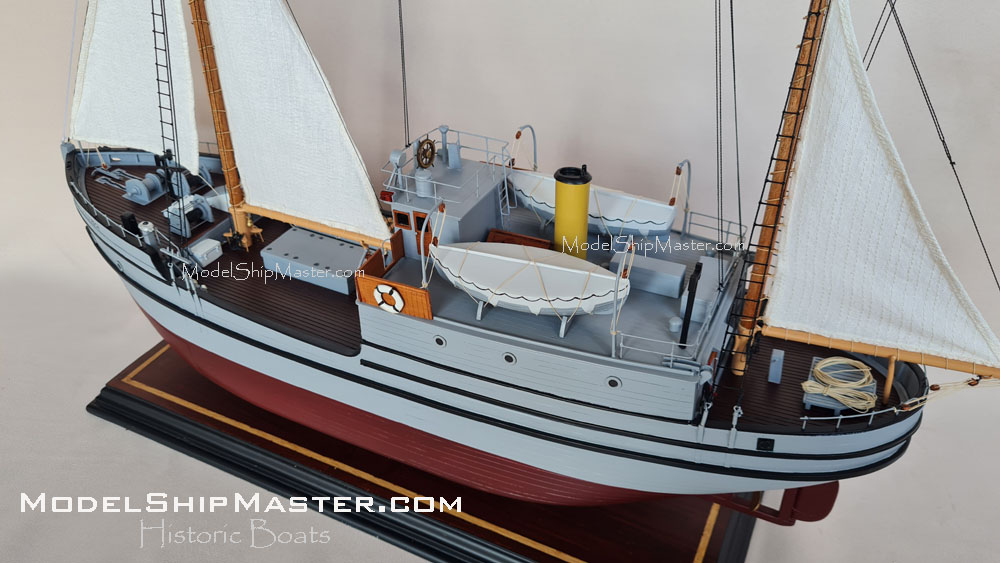
This primarily wood St. Roch
model is 26" long x 20.5" tall x 6" wide.
Compare our ship with a popular kit and you will see
our unparalleled research ability. The steel plates on
the hull is one of the clear indicators.
Model is built per commission only. Contact us for a
quote.
We require only
a small deposit to start the process. Please click here for
more details.
"The
two models arrived yesterday by FedEx. Each is simply
outstanding! The level of detail and quality is
definitely museum quality! Kudos to you and your
modelers. Both the
U-21 and the St. Roch are
now on prominent display in our home. Also kudos to your shippers and to FedEx.
I was very curious how they would be safely shipped, so
after taking over a hour to carefully disassemble the
crates I got my answer. Brilliant. After the Erebus is completed lets you
and I have a serious talk about potentially several more
orders."
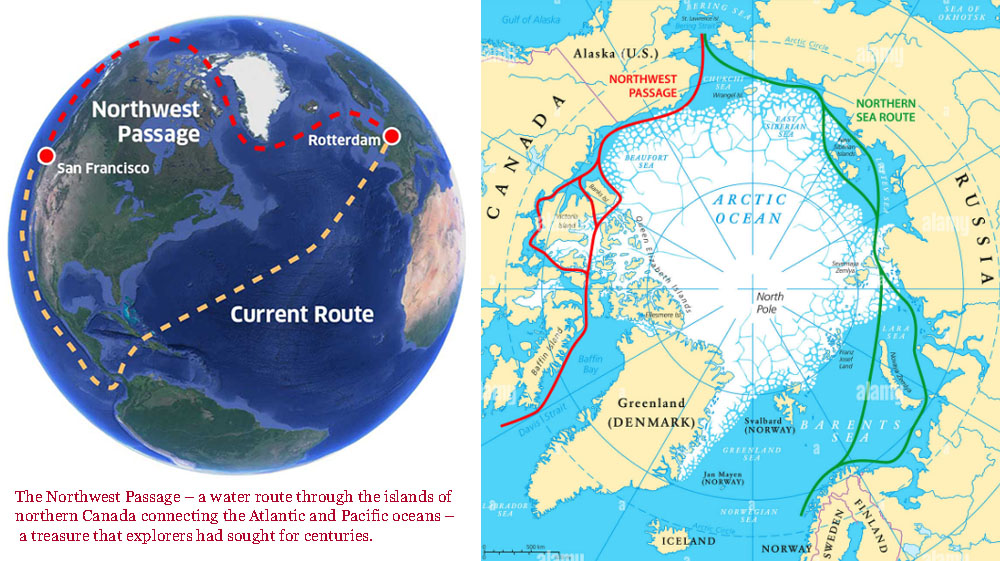
Learn more about the
St. Roch ship here:
https://en.wikipedia.org/wiki/St._Roch_(ship)
|